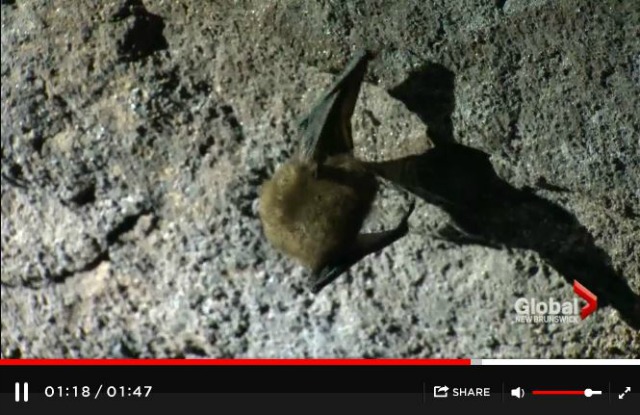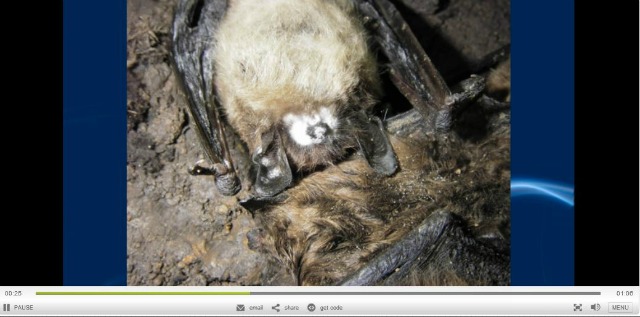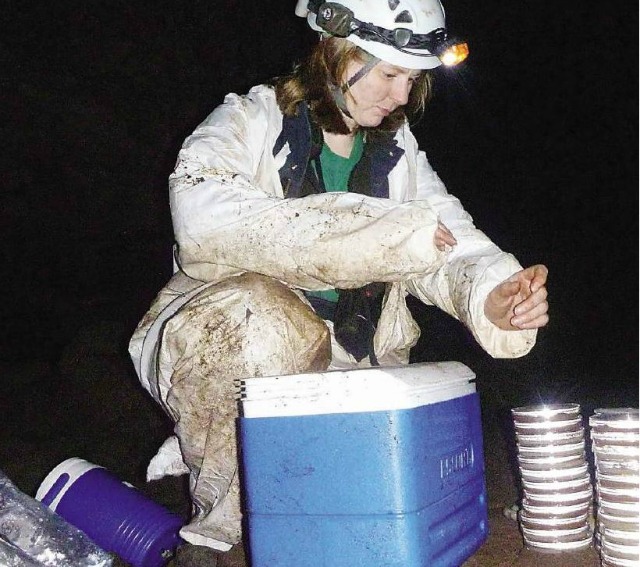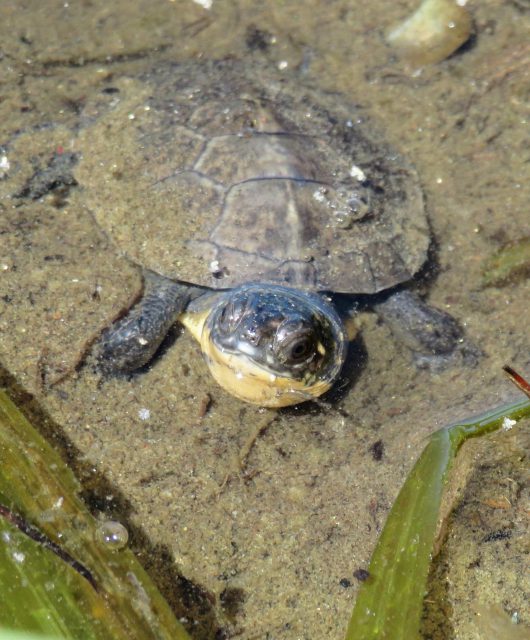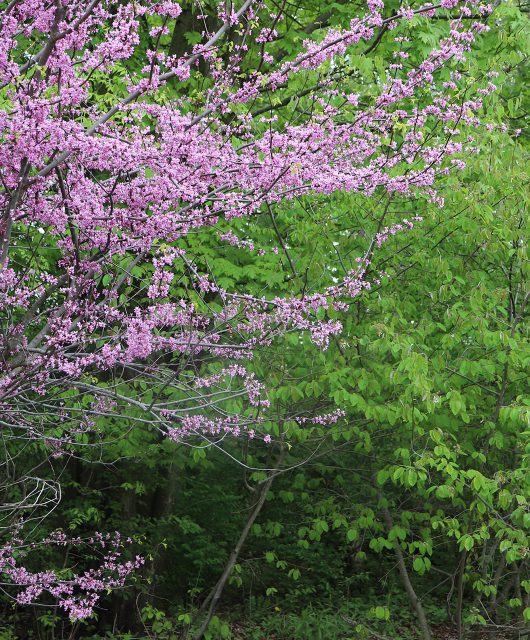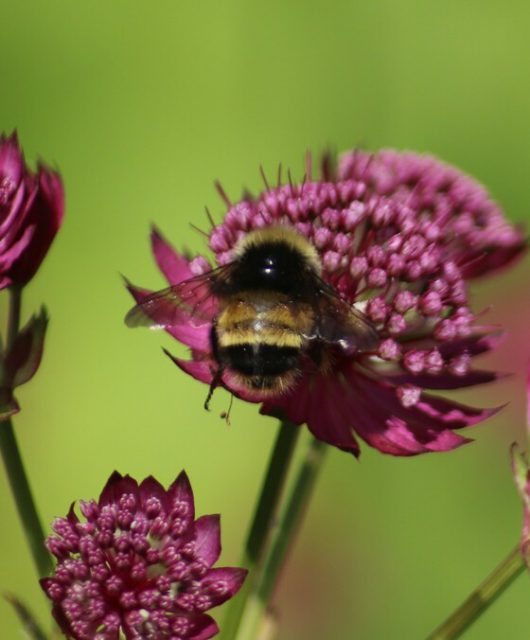There’s been a lot of media attention lately regarding declining bat populations. Check out these links below:
Click here to view the Global News coverage
Check out the Weather Network video by clicking here!
And there was the article below in the Telegraph Journal on May 22, 2014, page A4:
OUTLOOK NOT GOOD FOR BATS IN PROVINCE
Nature three common species being decimated by white-nose fungus, researcher says
MARTIN POIRIER TIMES & TRANSCRIPT
Three of the most common species of bats in New Brunswick are being eradicated by a fungus, a researcher says. White-nose syndrome has already wiped out most colonies of the little brown bat, Karen Vanderwolf said. Vanderwolf, who helped count the bats in Albert County caves and mines this year, says only 22 were found, a drop from 7,000 just three years ago. “The white-nose fungal disease is killing them off when they hibernate in the winter, ”Vanderwolf said, noting the fungus grows only in caves.The fungus invades the ears, feet and wings of the bats, resulting in a loss of bodily fluids.
Vanderwolf works at the New Brunswick Museum with researcher Donald McAlpine and also for the Canadian Wildlife Federation. She and McAlpine initially discovered white-nose syndrome in a bat over-wintering cave in Albert County. “In New Brunswick, there are seven species of bats, and four of them are affected by this disease,” Vanderwolf said. “Three of them have really declined precipitously. The fourth species, the big brown bat, really doesn’t hibernate in caves, so they aren’t really affected by the fungus. It hibernates in people’s homes. But farther south it does hibernate in caves. We don’t know why the mortality rate isn’t as high in that particular species – about 30 per cent, where little brown bats can be up to 100 per cent.”
The little brown bat, northern long-eared bat and the tri-coloured bat are the three most affected species in he province.The fungal disease can be found in Nova Scotia, Ontario and Quebec and its effects are comparable to what scientists are seeing in the United States.The syndrome is also in Prince Edward Island, where unexpected habernaculums (a refuge for a creature during winter) have been found because of dead bats on the ground.
The fungus is native to Europe and was discovered in a government-run tourist show cave near Albany, N.Y. in 2006. The hypothesis is that the fungus was introduced to North America by spelunkers who went caving in Europe and brought it back on their clothes. It didn’t take long for diseased bats to spread the fungus hundreds of kilometres a year throughout eastern North America.
“They are very social animals, which of course leads to disease transmission,” Vanderwolf said. “It’s quite depressing to go into these caves and do these surveys where we used to see hundreds of thousands.”
Little brown bats need shelter that never drops below freezing. Otherwise, they will die. Hollow tree trunks and bat houses are only temporary homes during the summer. Caves have stable temperatures and can be found in the southern part of province.
Vanderwolf said it’s hard to predict the impact. Some studies estimate that bats are worth from $3.7 billion to $58 billion in the United States alone in pest-control services.
“You can start to see this domino effect,” she said. The bats eat insects, including some significant pests in forestry and agriculture. “So possibly if the bats disappear, we’re going to see a lot more use of pesticides and higher food prices.”
No effective fungal vaccination has been developed to eradicate the disease, she said. “Trying to inoculate millions of wild bats isn’t really feasible. We can’t control the movement of wild bats. Trying to eradicate the fungus from the caves isn’t feasible because there’s a whole ecosystem in caves of fungi that depend on each other, so trying to eradicate that fungi will disrupt that ecosystem, so that’s not a really good option either.”
The fungus seems to be a permanent addition to cave vegetation.
On a hopeful note, the living bats were found in just one cave and didn’t seem to have visible infections.“It’s possible those are survivors,” Vanderwolf said. “Can’t say for sure, but it’s a very hopeful sign to see that.” Vanderwolf thinks these bats acquired a sort of a natural immunity in the population.
A healthy female bat produces one pup a year. Bats with the disease might not reproduce at all. “It would be definitely a slow recovery and will take a long time to get back to the levels we had a few years ago,” Vanderwolf said.
She says people can help by staying out of the caves so they don’t transmit the fungus or disturb the bats in winter.
The Canadian Wildlife Federation provides free bat houses to school groups. The groups put the houses up, monitor them and report back if they see bats.For more information about helping Vanderwolf with her research, go to cwf-fcf.org .
New Brunswick Museum researcher Karen Vanderwolf collects samples of the fungus that causes white-nose syndrome in the province’s bat population. PHOTO: Donald McAlpine

